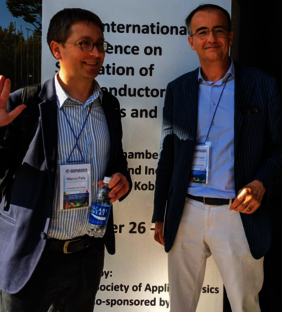Nanoscale transistors could enable more efficient electronics
A new solution to drastically reduce the energy consumption of electronic devices, resulting from the collaboration between the nanoelectronics group at the University of Udine and MIT in Boston, was recently published in the scientific journal Nature Electronics.
Silicon transistors, which are essential for operating devices like smartphones, computers, and automobiles, account for a significant portion of energy consumption in the electronics industry. However, the energy efficiency of these devices is limited by a physical phenomenon known as the "Boltzmann tyranny," which restricts reductions in operating voltage. The new approach developed by researchers of the University of Udine and MIT involves the use of three-dimensional transistors, made with vertical nanowires, to operate at lower voltages while maintaining high performance.


